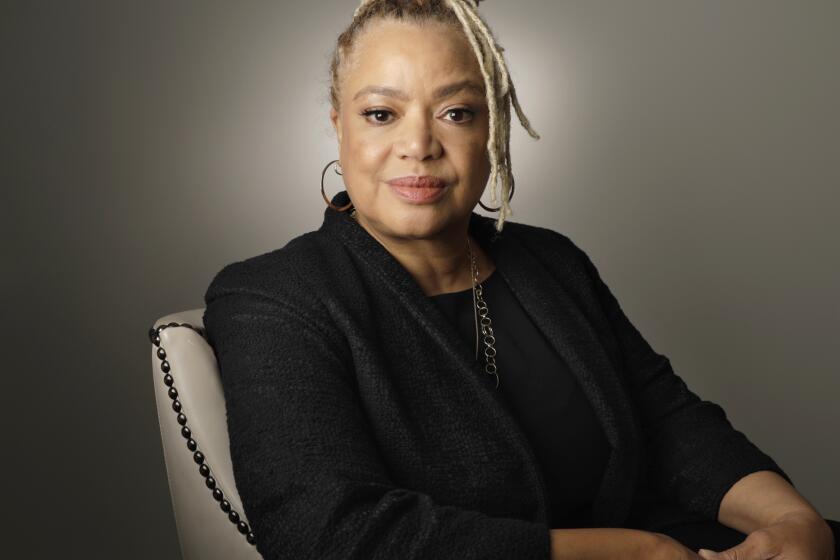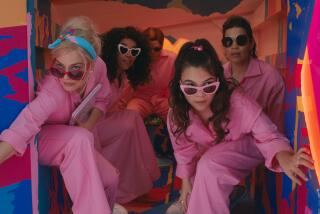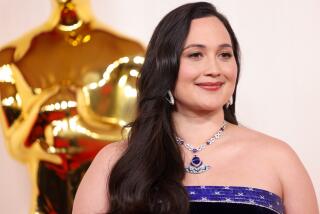Women and people of color are ‘vastly underrepresented’ at film fests, says new study
A new study has found another arena within the entertainment industry where women and people of color remain underrepresented: the world’s top film festivals.
The Time’s Up Foundation and USC Annenberg Inclusion Initiative released a report on Saturday examining the gender, race and ethnicity of narrative film directors, film festival programmers and executives from 2017-2019 titled “Inclusion at Film Festivals.”
The findings show that women and people of color are “vastly underrepresented” at film festivals worldwide.
“Despite the progress that is underway, the fact is that the voices and talent of women and people of color remain marginalized,” said Dr. Stacy L. Smith, founder of the USC Annenberg Inclusion Initiative in a statement.
“The data in this report makes it clear that the next generation of women of color filmmakers are not being launched into the industry at the same rate as their white male peers,” she added.
The study also suggested that increasing the number of women of color in decision-making roles at film festivals is vital for increasing inclusion. The report indicated that when film festivals had more women of color working as programmers, they were more likely to feature movies directed by women of color.
The Center for the Study of Women in Television and Film found that representation in top 2019 films increased for white women, but depictions of other groups decreased or remained stagnant.
One section of the study assessed the diversity of directors among narrative competition films at the five top international film festivals, while another looked at the gender and race/ethnicity of directors of all narrative features across the 10 top film festivals in North America.
Both sections also examined the demographics of the festival programmers and executives. The report focused on film festivals because they are often how emerging filmmakers break into the industry.
The study found that at the five top international festivals (Berlin International Film Festival; Cannes Film Festival; Sundance Film Festival; Toronto International Film Festival; Venice International Film Festival), 25% of competition directors were women and 75% were men — 65% of the competition directors were white and 35% were directors of color.
Overall, white men accounted for 47% of directors of the three years examined, 27% were men of color, 17% were white women and 8% were women of color.
Looking at the executives of these five festivals, seven were men and three were women. Of these 10 individuals, just one man was a person of color. Additionally, 47% of the festival programmers of those five events were women as of 2019 and 21% were people of color; 14% of all programmers were women of color, but they were primarily concentrated at Sundance and Toronto.
The number women directing top-grossing movies rose to the highest level since 2007, with the percentage of female directors doubling since 2018, indicating that Hollywood is making modest progress in its efforts to diversify its ranks.
The study found similar demographics for the directors at the 10 top North American festivals: Sundance, Toronto, New York Film Festival, South by Southwest, Telluride Film Festival, Tribeca Film Festival, Palm Springs International Film Festival, Santa Barbara International Film Festival, Seattle International Film Festival and Slamdance Film Festival.
According to the report, 71% of the directors were men and 29% were women, with 62% of all directors being white and 38% being people of color. Overall, 45% of the directors were white men, 26% were men of color, 17% were white women and 12% were women of color.
There was a 50-50 split between male and female top executives at these 10 festivals (including executive directors, directors of programming and artistic directors). Eighty-five percent of these executives were white and only one was a woman of color. Of the programmers of these North American festivals, 43% were white men, 31% were white women, 13% were men of color and 13% were women of color.
“While some festivals are taking the lead in featuring the voices of women and women of color, this study drives home the need to expand opportunities for women festival programmers — and, in so doing, women directors — of all backgrounds. We can do better,” said Tina Tchen, president and CEO of Time’s Up Foundation in a statement.
Time’s Up and the USC Annenberg Inclusion Initiative will discuss the study during a panel at the Sundance Film Festival on Saturday.
More to Read
Only good movies
Get the Indie Focus newsletter, Mark Olsen's weekly guide to the world of cinema.
You may occasionally receive promotional content from the Los Angeles Times.












